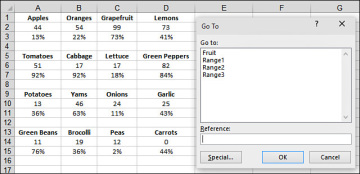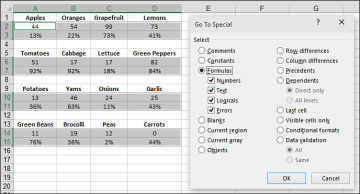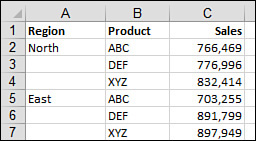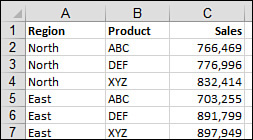␡
- The Range Object
- Syntax for Specifying a Range
- Named Ranges
- Shortcut for Referencing Ranges
- Referencing Ranges in Other Sheets
- Referencing a Range Relative to Another Range
- Using the Cells Property to Select a Range
- Using the Offset Property to Refer to a Range
- Using the Resize Property to Change the Size of a Range
- Using the Columns and Rows Properties to Specify a Range
- Using the Union Method to Join Multiple Ranges
- Using the Intersect Method to Create a New Range from Overlapping Ranges
- Using the IsEmpty Function to Check Whether a Cell Is Empty
- Using the CurrentRegion Property to Select a Data Range
- Using the Areas Collection to Return a Noncontiguous Range
- Referencing Tables
- Next Steps
This chapter is from the book

Using the CurrentRegion Property to Select a Data Range
CurrentRegion returns a Range object that represents a set of contiguous data. As long as the data is surrounded by one empty row and one empty column, you can select the data set by using CurrentRegion:
RangeObject.CurrentRegion
The following line selects A1:D3 because this is the contiguous range of cells around cell A1 (see Figure 3.5):
Range("A1").CurrentRegion.Select

Figure 3.5 Use CurrentRegion to select a range of contiguous data around the active cell.
This is useful if you have a data set whose size is in constant flux.






